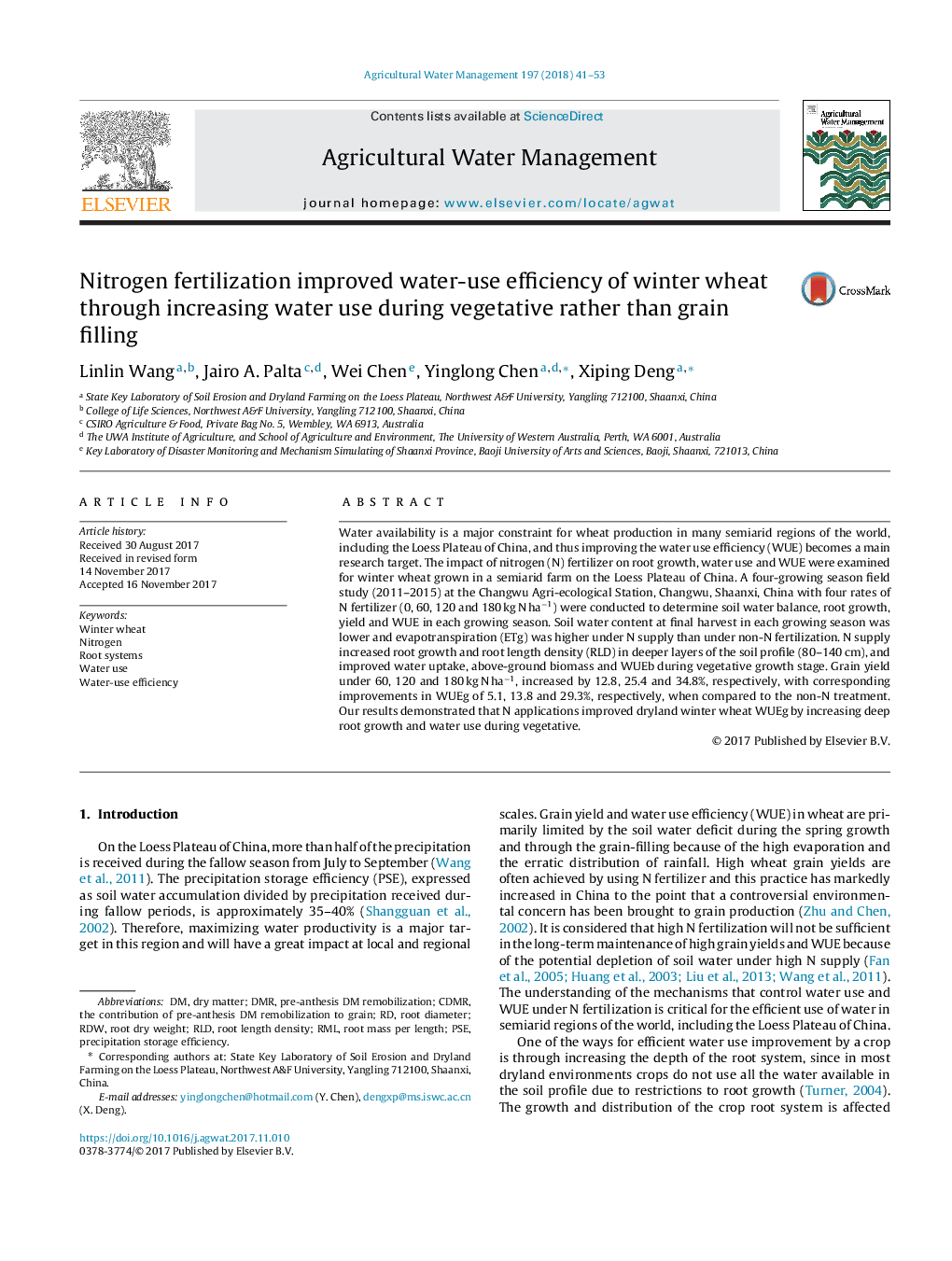| Article ID | Journal | Published Year | Pages | File Type |
|---|---|---|---|---|
| 8873156 | Agricultural Water Management | 2018 | 13 Pages |
Abstract
Water availability is a major constraint for wheat production in many semiarid regions of the world, including the Loess Plateau of China, and thus improving the water use efficiency (WUE) becomes a main research target. The impact of nitrogen (N) fertilizer on root growth, water use and WUE were examined for winter wheat grown in a semiarid farm on the Loess Plateau of China. A four-growing season field study (2011-2015) at the Changwu Agri-ecological Station, Changwu, Shaanxi, China with four rates of N fertilizer (0, 60, 120 and 180 kg N haâ1) were conducted to determine soil water balance, root growth, yield and WUE in each growing season. Soil water content at final harvest in each growing season was lower and evapotranspiration (ETg) was higher under N supply than under non-N fertilization. N supply increased root growth and root length density (RLD) in deeper layers of the soil profile (80-140 cm), and improved water uptake, above-ground biomass and WUEb during vegetative growth stage. Grain yield under 60, 120 and 180 kg N haâ1, increased by 12.8, 25.4 and 34.8%, respectively, with corresponding improvements in WUEg of 5.1, 13.8 and 29.3%, respectively, when compared to the non-N treatment. Our results demonstrated that N applications improved dryland winter wheat WUEg by increasing deep root growth and water use during vegetative.
Keywords
Related Topics
Life Sciences
Agricultural and Biological Sciences
Agronomy and Crop Science
Authors
Linlin Wang, Jairo A. Palta, Wei Chen, Yinglong Chen, Xiping Deng,
